The Best Sales Campaign Ideas & Templates to Increase Your Revenue
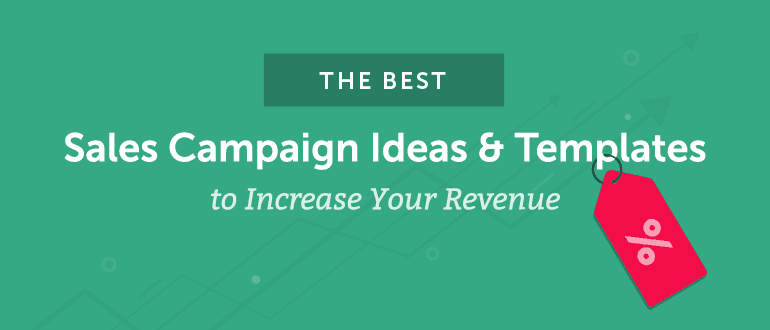 It’d be great if everyone always wanted to pay full price for your product or service, but this isn’t the reality most marketers face. Enter the sales campaign. At various times during the year, a strategically planned sales or promotional campaign can boost revenue and move your business from the red to the black.
*Fun Fact* Many believe that’s where “Black Friday” got its name. The promotions on that day generate so much revenue, that retailers are pushed "into the black" for the year.
In this post, you’ll find everything you need to plan your next sales or promotional campaign, including 19 real-life promotional campaigns to draw inspiration from and four downloadable templates to help plan your next sales campaign.
It’d be great if everyone always wanted to pay full price for your product or service, but this isn’t the reality most marketers face. Enter the sales campaign. At various times during the year, a strategically planned sales or promotional campaign can boost revenue and move your business from the red to the black.
*Fun Fact* Many believe that’s where “Black Friday” got its name. The promotions on that day generate so much revenue, that retailers are pushed "into the black" for the year.
In this post, you’ll find everything you need to plan your next sales or promotional campaign, including 19 real-life promotional campaigns to draw inspiration from and four downloadable templates to help plan your next sales campaign.
Download These Sales Campaign Templates to Get Started
Sales campaigns have a lot of moving pieces and are no cake walk to plan. You’ll need quite a few people to help make this campaign a reality, so download these templates to make your job a little easier. Here’s a list of what templates are included in the download:- A Creative Brief Template to clarify the high-level parts of your campaign.
- A Team Huddle PowerPoint Template to get team buy-in.
- A Campaign Planning Spreadsheet to get everything in order.
- A Marketing Calendar Template to set and meet all your deadlines.
What is a Sales Campaign
A sales campaign is a great way to increase demand for your product in a short amount of time. The purpose of the campaign is to inch existing leads closer to making their purchase. If someone is sitting on the fence unsure if they will buy, a sales campaign will likely nudge them toward finalizing their purchase. The average promotional campaign usually takes a multi-channel approach and runs for a limited time only. This sense of urgency motivates prospective buyers to move quickly throughout the marketing funnel. Why? Well, according to RetailMeNot, 81% of Americans say finding a great offer or discount is on their mind throughout the entire purchase journey. So as someone navigates their way through the marketing funnel, they’re always on the lookout for price drops and promotions. This is especially true for big-ticket purchases and those that fall under wants, rather than needs.
Why should you plan a sales campaign? 81% of Americans say finding a discount is on their mind throughout the entire purchase journey.
Click To TweetLet CoSchedule do the Heavy Lifting for Planning Your Sales Campaigns
Simply offering a discount or promotion to someone increases the amount they spend by 24%. That said, it’s clear that launching a sales campaign will give your business a boost. However, the multi-channel approach and cross-functional collaboration a promo campaign needs can create a project management nightmare for marketing managers. Maybe you’re collaborating with people in different cities, which creates a lot of emailing back and forth and endless video/phone calls. Or, maybe you’re using a bunch of disconnected tools to manage your campaign and a crazy spreadsheet with endless tabs that take a lot of manual work to update. The good news is there’s a better way to plan all your sales and promotional campaigns. One where you don’t want to pull your hair out and makes you feel like it’s 2019… not 1998. CoSchedule is the only Marketing Suite where you can plan all your sales and marketing campaigns; manage all your team’s tasks; write and publish all your content marketing; and organize, schedule and analyze all your social media activity. Maybe you’re not quite ready to move your team over to a new tool. No sweat. This post will teach you the best way to plan and launch a sales campaign whether or not you use a marketing suite like CoSchedule. Turn your sales campaign ideas into persuasive pitches with the Sales Pitch Generator!Formalize the Campaign with a Creative Brief
In the creative brief template provided, work through each of the elements to ensure everyone in the project is aware of their role within the project, the purpose of the campaign, who the target audience is, etc.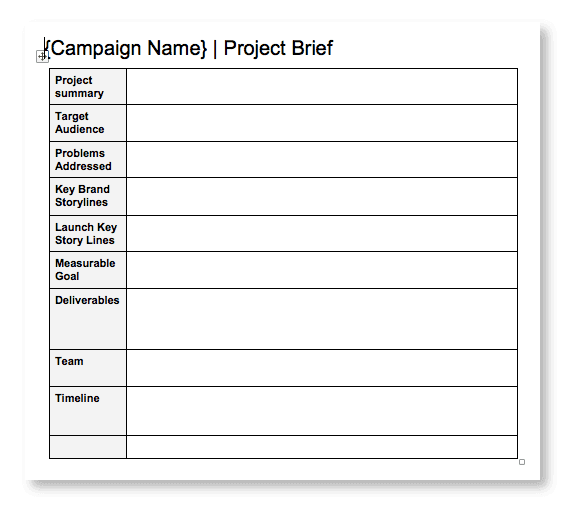
Project Summary
To start, summarize the purpose of the campaign.. Here’s an example: This promotional campaign will raise awareness and loyalty of our new product by offering individuals a 25% discount. The first leg of the campaign with entail social media messaging, email marketing, and direct mail flyers. The second leg of the campaign with include partnerships with influencers with unique discount codes generated for each influencer. The final leg of the campaign will create a UGC (user-generated content) social media contest for a chance to win $500.Target Audience
Who does this campaign target? Existing Leads - Target entire prospect email list promoting the discount. They’ve shown previous interest in our products but either purchased a different product or made no purchase decision. Unknown Potential Customers - Individuals matching our target persona demographics, but are unfamiliar to us at the moment. Promote campaign with targeted boosted social posts, google ads, influencer marketing etc. Existing Customers - Target all existing customers with email outreach. Recommended Reading: How To Find Your Target Audience And Create The Best Content That ConnectsProblems Addressed
What business problem are you aiming to solve with this campaign?- Our team needs to raise awareness of our new product.
- Our team needs to increase social media content and product reviews.
- Helps us overcome brand perceptions that our product offering is too limited.
Measurable Goal
Sales or promotional marketing campaigns usually set goals based on promotional lift. This is calculated by figuring out the percentage increase in sales or traffic attributed to the campaign. Promotional lift can be calculated by comparing the percent increase in sales or traffic during the promotional period against a non-promotional period. Here is the formula: Increase = New Number – Original Number % increase = Increase ÷ Original Number × 100.
Timeline
This can be a little tricky as sales promotions can run indefinitely or can be as short as a few hours. The sales campaign promotion that you choose will dictate how long your campaign will run for. For instance, promotional welcome emails that offer a discount for newsletter signups can have a long shelf life. Whereas flash sales or BOGO sales promotions typically only last a few days. Some others, like doorbuster offers, may only last a couple of hours. There’s no hard and fast rule, but usually the deeper the discount, the shorter the campaign period will be.Schedule a Team Huddle
The next step to planning is to schedule a team huddle. A team huddle is essentially a project kickoff meeting and ensures that everyone is on the same page. You’ll invite all of the project’s contributors into one room so they are aware of how they will contribute to the success of the campaign. Not another meeting, you say… However, the team huddle has a lot of benefits.- Offers a chance for individuals to ask questions about the project.
- A glimpse of what is expected of them and when it’s due.
- A sense of unity.
 Here’s a sample timeline to help you populate your own document.
Here’s a sample timeline to help you populate your own document.
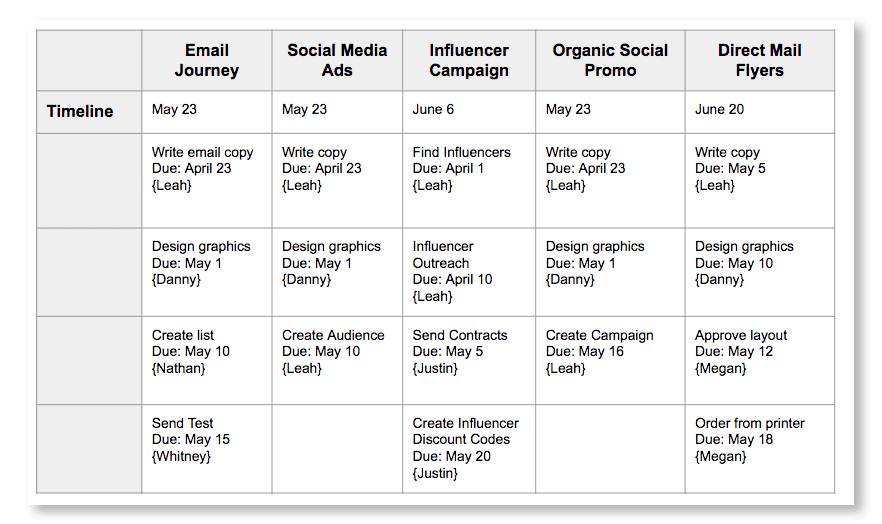
Delegate Tasks and Map out Your Campaign
Here’s where CoSchedule comes in handy. It takes your strategy planning and task delegation off of a spreadsheet on into a central location where your entire team can see their priorities and what’s coming down the pipeline. It finally sheds light on your marketing strategy and gives you the ultimate visibility into what’s going on at any given moment. Before you can map out your project, you have to know what needs to be done to launch the project. You’ll have to sit down and create a workflow for each project that makes up your sales campaign. Here’s how to do it.1. Map Out Everything That Needs To Be Done
To start, sit down and write out every step that needs to be done before the project goes live. You can open Evernote and type every step in your process in a bulleted list or use a stack of post-it notes. At this point, you are looking for a raw list of every single step in a process.
At this point, you are looking for a raw list of every single step in a process.
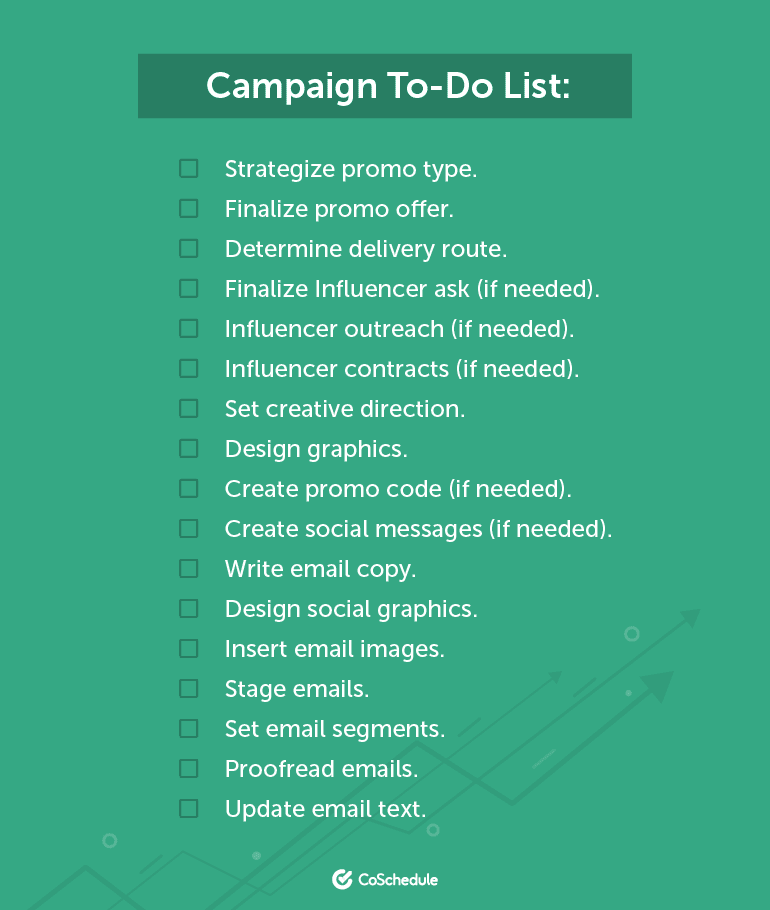
2. Reduce The Number of Steps in Your Workflow
Next, remove and combine the steps in your workflow to streamline the process. The best way to simplify is to question why each step exists. Typically, you will find that many steps exist in for no good reason. Often they can be combined with other steps or don’t necessitate a task of their own.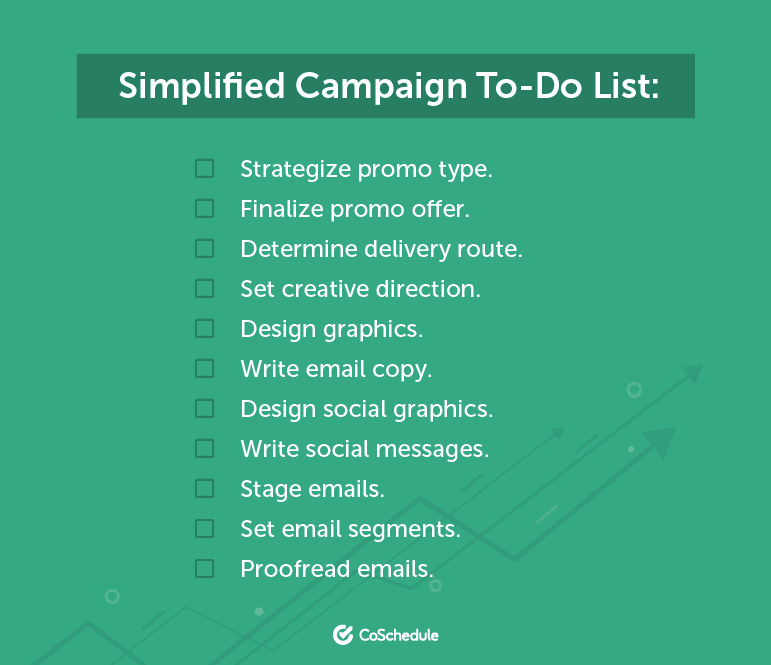
3. Choose Who Will Complete Each Task & Due Dates
You likely already know who will be responsible for each marketing task marketing within your business. So this step is easy, assign the responsibility to the person best suited to complete the task. Next, review every task and think about how soon the task needs to be accomplished for the project to go live on its date. Work back from the project’s due date to send the individual task due dates. Ask yourself: “How many days before publish (or launch) does the last task in my workflow need to be complete?”Map Out Your Sales Campaign
Now that you know when everything is due and who is responsible for it, map all those activities on your marketing calendar. Here’s how to map out all your marketing campaigns with CoSchedule. Start by adding a project to your marketing calendar and choosing the option entitled “Marketing Campaign” Next, you’ll name your campaign, give it a color label, and enter the dates of the campaign’s duration.
Next, you’ll name your campaign, give it a color label, and enter the dates of the campaign’s duration.
 You’ll see the duration of your sales campaign visualized on your marketing calendar.
You’ll see the duration of your sales campaign visualized on your marketing calendar.
 Next, add each individual project to your campaign, like podcasts, emails, social campaigns, and flyers.
Next, add each individual project to your campaign, like podcasts, emails, social campaigns, and flyers.
 From here, you can add individual tasks to each project. Once a task is added, the individual will be notified what their task is and when it’s due.
From here, you can add individual tasks to each project. Once a task is added, the individual will be notified what their task is and when it’s due.

Types of Sales Promotional Campaigns
Now you know how to plan your sales campaign, but you’re not exactly sure what to offer to meet your sales goals. Here’s a (nearly) comprehensive list of all the different types of sales promotions you can offer and some real-life examples to see them in action.Discount Codes
There are two types of discount codes and each have a different strategy attached – a personalized, one-time code specifically made for the use of a single individual or a generic code that can be used by anyone. Companies issue unique coupon codes to prevent Chrome extensions like Honey from reusing the code. The unique coupon codes protect margins and allow for better tracking and ROI. A generic coupon code can be used by anyone and can be passed along from person-to-person. You’ll usually see generic codes attached to limited discounts and free shipping which don’t deplete profit margins.Welcome Bonus Discount Promo
One common form of sales promotions are welcome bonuses. These are usually sent in the form of emails when someone subscribes to a newsletter. The individual has expressed interest in your products by registering to be a part of your email list, so it makes sense to entice them to move down the marketing funnel with a discount promo.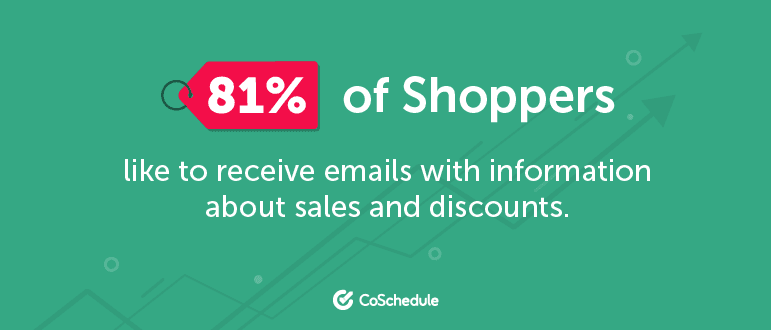 In fact, customers WANT this from your email marketing – 81% of shoppers like to receive emails with information about sales and discounts.
In fact, customers WANT this from your email marketing – 81% of shoppers like to receive emails with information about sales and discounts.
Tattly – Generic Discount Code Welcome Email
This example from Tattly shows a generic welcome promo when registering for their email list. The benefits of offering a generic code mean that you don’t have to create a custom discount code of each individual. These codes can be passed along to others, however, which makes it harder to attribute sales to the welcome email.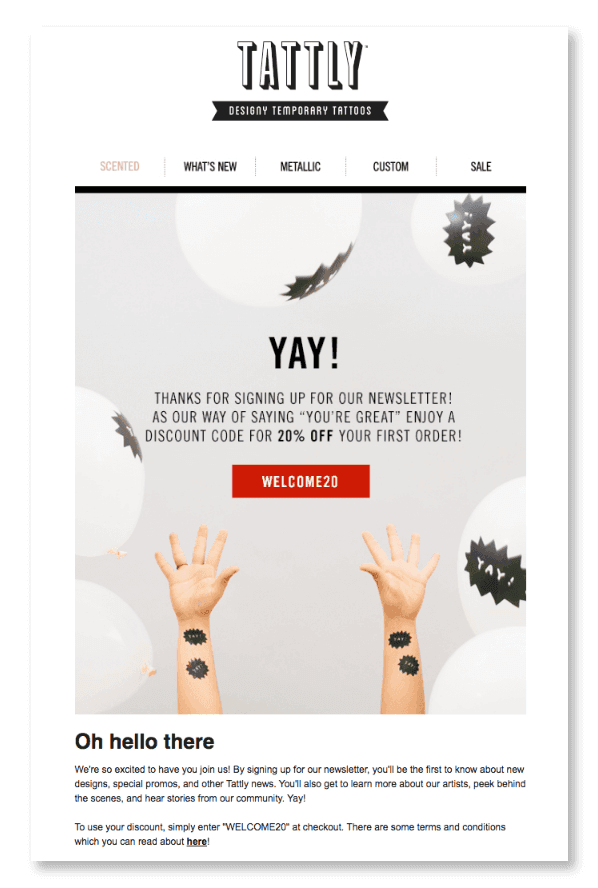
Birch Lane – Custom Discount Code Welcome Email
Furniture company, Birch Lane, offers new subscribers (what seems to be) a custom welcome discount code.
WYND – Giveaway Welcome Email
WYND takes a different approach by offering a free filter for their air purifiers when you make your first purchase.
Buy One Get One (BOGO) Sales Campaigns
BOGO promotions are a great way for businesses to encourage the clearing of stock. You’ll typically see BOGO followed by a percentage off. These campaigns increase revenue since they encourage a purchase to be made a full-price. The nice thing about BOGO promos is that they can be used for both products and services. For example, you could offer BOGO free or BOGO 50% off on personal training services, which help create demand during slow seasons.Target - BOGO Sales Promotion
The retailer offered BOGO 50% off on all swimwear for the family. This campaign was run in March right around spring break. The swim season is short, so it made sense for the retailer to work on pushing its swimwear line early in the calendar year.
Michaels - BOGO Free Sales Campaign
Craft store, Michaels, tends to have a somewhat seasonal purchasing cycle, where major holidays like Christmas and Easter bring in more sales than other times. To battle this, the retailer offered a BOGO on all it’s picture frames at the end of February. Right in the middle of Christmas and Easter to bolster sales in an often slow period.
Buy More, Save More Sales Campaigns
Buy more, save more promotions encourage customers to purchase more, which helps decrease your slow-moving stock or items that aren’t selling quickly. Customers who were waiting for a sale now have an excuse to splurge a little more than they otherwise would have. Common Buy More, Save More increments are...- 10% off when you spend $100
- 15% off when you spend $200
- 20% off when you spend $500
- 25% off when you spend $1000
West Elm - Buy More, Save More Sales Campaign
This example from furniture Store West Elm follows the discount scheme listed above. The promo ran during the holiday season, the perfect time to purchase big-ticket items as either gifts or to spruce up your home before visitors arrive for the holidays.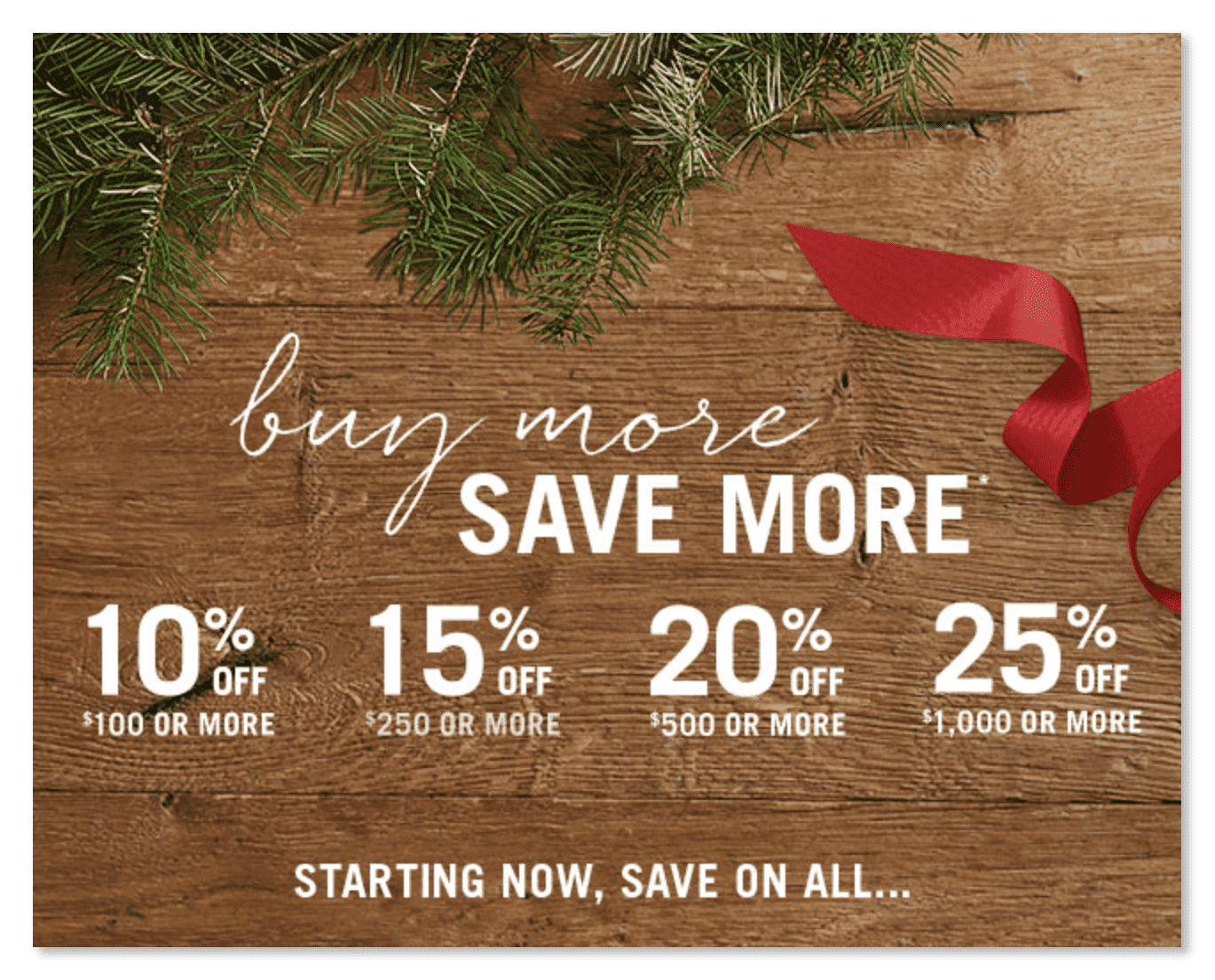
Stella & Dot - Buy More Get More Promotion
Clothing retailers can also utilize buy more get more sales promotions. You’ll notice the discount scheme is a little different. Rarely do clothing purchases go as high as $1000, so adjusting the sales range, makes this promotion fit better to the company’s price range.
Lowe’s - Buy More Get More Campaign
You don’t have to offer many different tiers of your buy more get more campaign. DIY retailer, Lowe’s offers only two tiers 10% off of $100 and 15% off of $400.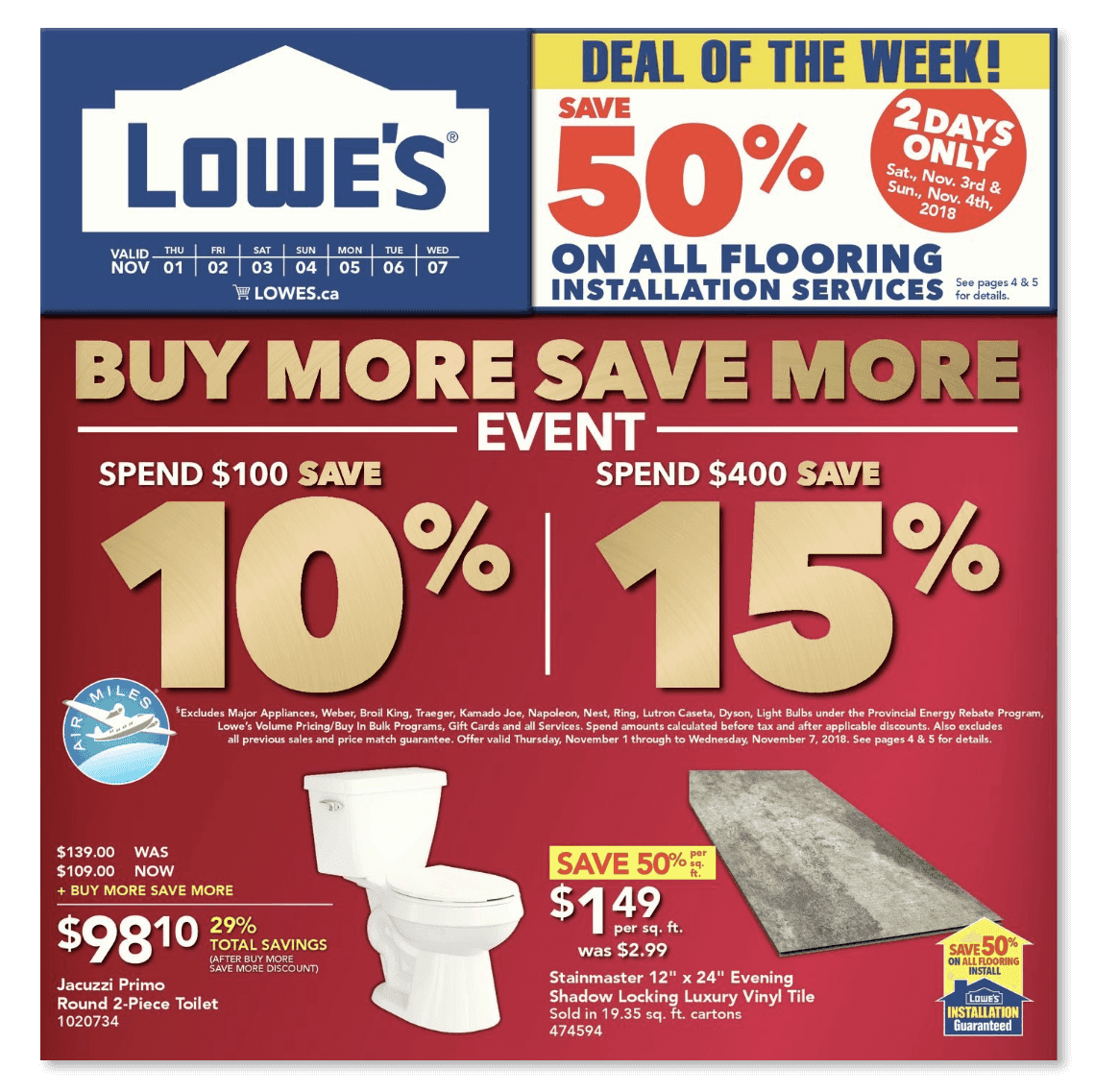
Customer Loyalty Sales Campaigns
Customer loyalty sales campaigns help build stronger relationships with those you are already fans of your products. These usually take form as an email with a discount code; points systems to save on future purchases and free products when purchasing a certain number of items or dollar amounts.West Elm - Customer Loyalty Promotion
Here’s another example from West Elm. This customer loyalty promotion was sent in an email and contained a custom discount code for 20% off an entire purchase. The email was framed as a “we miss you” promotion, encouraging the receiver to make additional purchases with the company.
DSW - Customer Loyalty Program
The DSW customer loyalty program takes a gamified approach, where members of their VIP program unlock rewards from shopping with the retailer. The company sends regular email promotions to members to update customers about their VIP status and sends discount promotions based on their spending habits.
Sephora - Customer Loyalty Program
Sephora has one of the most famous customer loyalty programs – the Beauty Insider program. In fact, it has over 17 million members. Members earn rewards for each purchase and can choose how they want to redeem points. Redemption options include free samples, discounts, gift cards, etc. The company also sends an annual birthday gift which includes a fee sample of your choice.
Rebate Sales Campaigns
A rebate can also be known as a refund. These sales campaigns are popular among businesses but can be unpopular to the customer. The discount process shifts to after the point of sale and makes it more difficult for the customer to receive the discount. This is popular for businesses because the customer becomes less likely to request the rebate as it can often be a labor-intensive process. This is called “slippage” in the retail world. The customer spends like they are getting a discount but often doesn’t end up sending in the rebate. This can result in negative attitudes toward your company and the feeling of being ripped off. Rebate programs typically work best with high ticket items. Typically, low-value rebates have a low redemption rate. For example, a $5 rebate will seldom be mailed in as the savings amount doesn’t justify the time spent trying to redeem it. A rebate that is worth $100 is worth the time to fill out, which will increase the redemption rate.CooperVision - Mail-in Rebate
Contact lenses are a big cost for the wearer, but manufacturers often offer mail-in rebates to help lessen the overall cost. CooperVision’s rebate does a good job of outlining how much the customer will pay out of pocket, which is a requirement by the FTC. The company issues its rebates in the form of Visa prepaid gift cards to be used like cash wherever the customer likes.
Menards - Mail-in Rebate Sales Promotion
Menards is a midwestern DIY retailer similar to Home Depot or Lowe’s. The company offers an annual sales campaign where customers can receive an 11% rebate on all purchases. Its rebates are offered in the form of in-store credit on future purchases at Menards. Bear in mind this can be an unpopular choice as customers want the option to send their rebate as they choose.
Exchange / Upgrade Sales Promotions
This type of sales promotion is perfect for companies that produce products with a long shelf life and are difficult to recycle or get rid of. By offering a discount for exchanging an old version, individuals are more encouraged to upgrade their old model, which increases sales for the company.Target - Car Seat Trade-in Discount
Target offers customers 20% their purchase of a car seat when they bring in their old one for trade-in. Children outgrow their infant carrier within the first year of life, so this sales campaign helps Target increase the likelihood that a parent will choose Target for their next car seat purchase. Likewise, the customer can feel good about their trade-in since Target recycles the materials from the old seat.
Apple - Device Trade-in Discount
Apple encourages individuals to upgrade to the newest iPhone with its trade-in discount. Eligible devices can earn the customer credit toward their next iPhone purchase. If the device isn’t eligible, Apple will still take it and recycle it free of cost.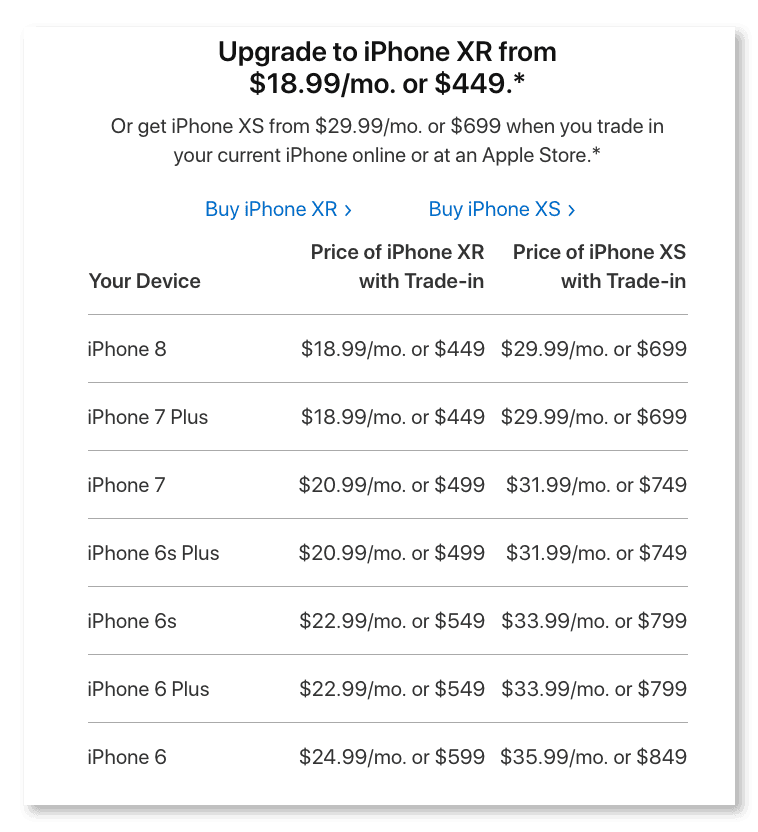
Influencer Discount Campaigns
Influencer campaigns usually take from via social media – particularly Instagram. Influencer marketing is notoriously difficult to track ROI, so using a custom discount code helps track how much revenue the influencers are bringing in for your business. Custom Links and UTM codes are also strategic ways to track ROI on your influencer campaign. Here are some examples to illustrate.Revitalash - Influencer Discount Code
Revitalash partnered with TV personality, Cameran Eubanks to offer her followers 15% off when using the discount code cameran15. Partnering with TV personalities allows your business to gain access to a wider reach of individuals within your target market.
Thrive Market - Influencer Discount Link
 Thrive Market partnered with the famous furry influencer, Manny the Frenchie, to promote its products. The company used a custom link to track and offer customers 20% off. The company also doubled its offer by donating $20 to Halo Pets for every purchase made.
Thrive Market partnered with the famous furry influencer, Manny the Frenchie, to promote its products. The company used a custom link to track and offer customers 20% off. The company also doubled its offer by donating $20 to Halo Pets for every purchase made.
Abandoned Cart Discounts
Over 67% of online shopping carts are abandoned. For every one transaction your business completes, there are nearly two are abandoned. That is a lot of lost revenue. Creating an abandoned care email discount can help recover some of that revenue and nudge those who were close to purchasing to the final stages of the sales funnel.Levis Abandoned Cart Sales Promotion
This example from Levis offers the customer 25% off for completing their purchase. 25% off might seem like a lot, but don’t be deterred. You can offer any discount you like or even throw in free shipping – the important thing is that you offer some type of carrot to entice the customer to make their purchase.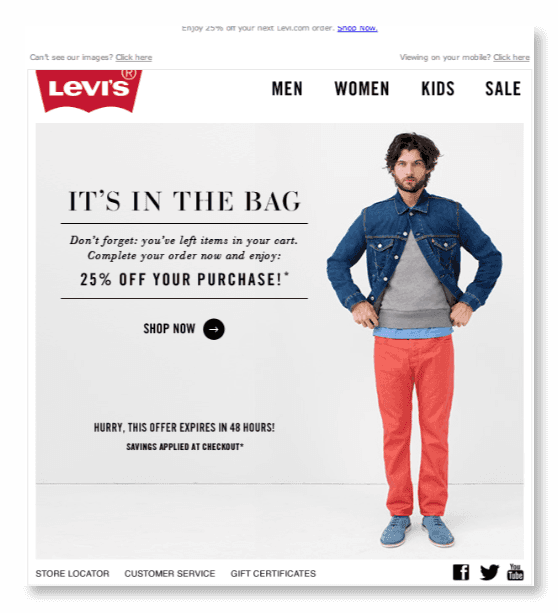
Kate Spade Abandoned Cart Sales Promotion
Clothing brand, Kate Spade, offers a custom 15% off promo code to entice customers to complete their purchases. The offer also leverages the benefits of time limitations to create a sense of urgency for the buyer.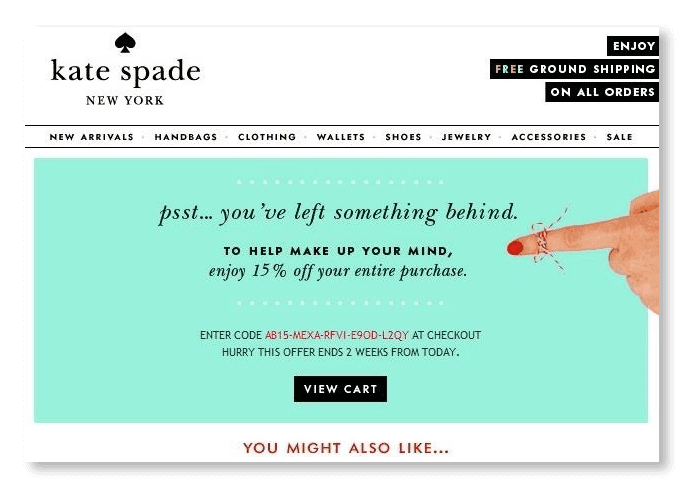
Plan and Organize the Best Sales Campaign
Now that you’ve got a bunch of ideas for your next sales promotional campaign and a few templates to help you get things started, it’s time to start testing and planning your campaign. Learn how CoSchedule can help you plan all your marketing projects, including sales campaigns, without all the headaches that come from makeshift marketing.


